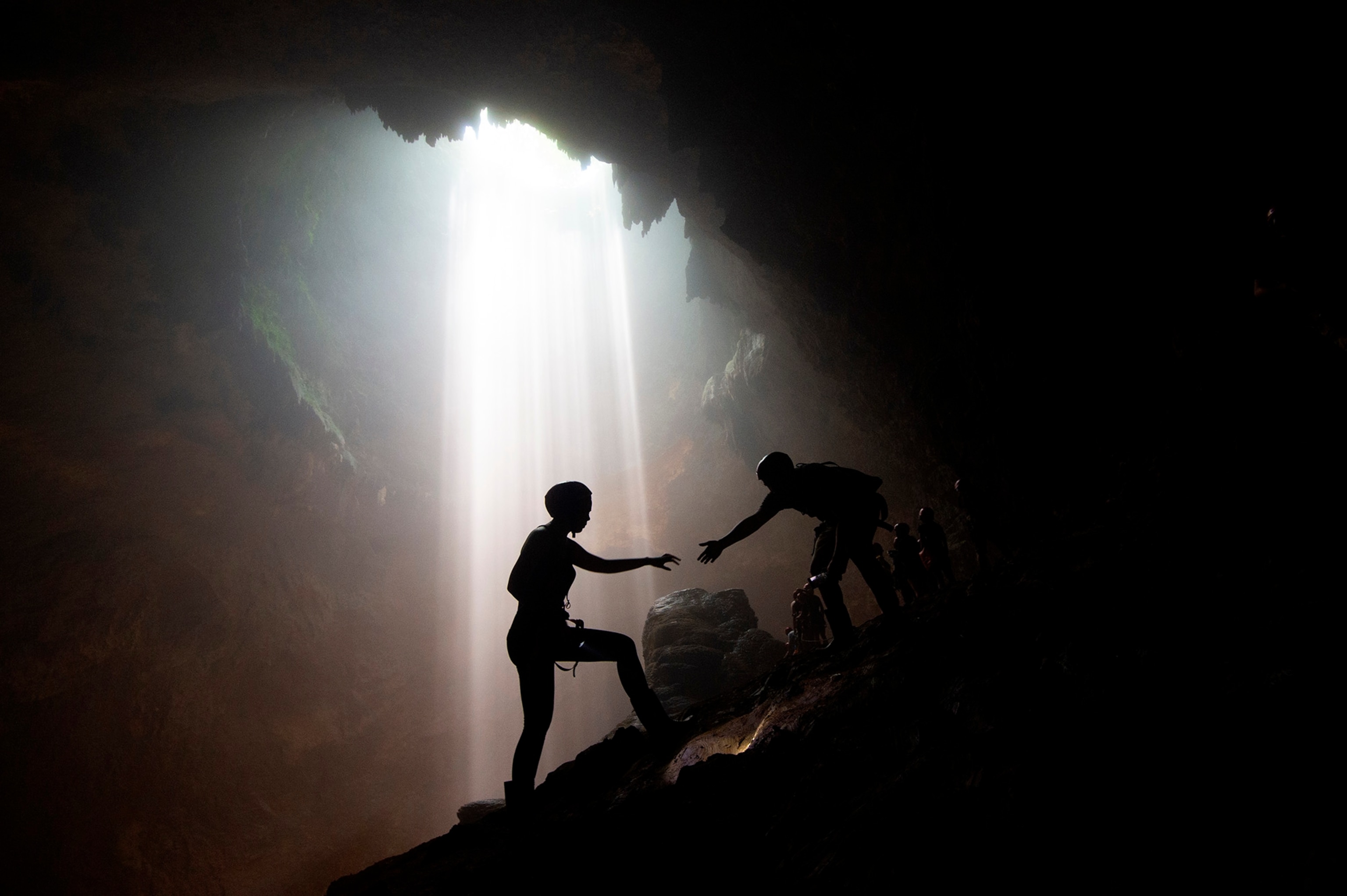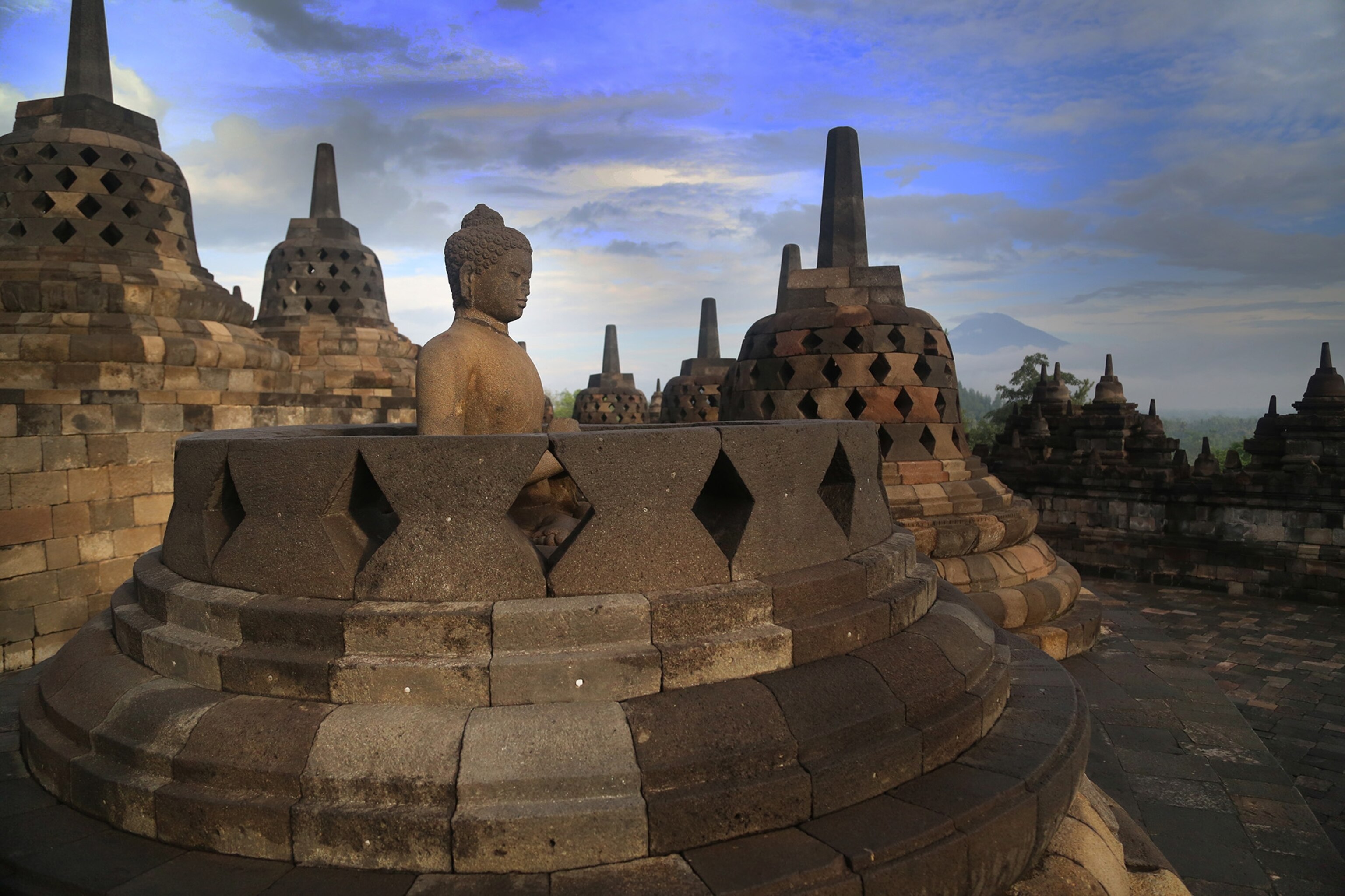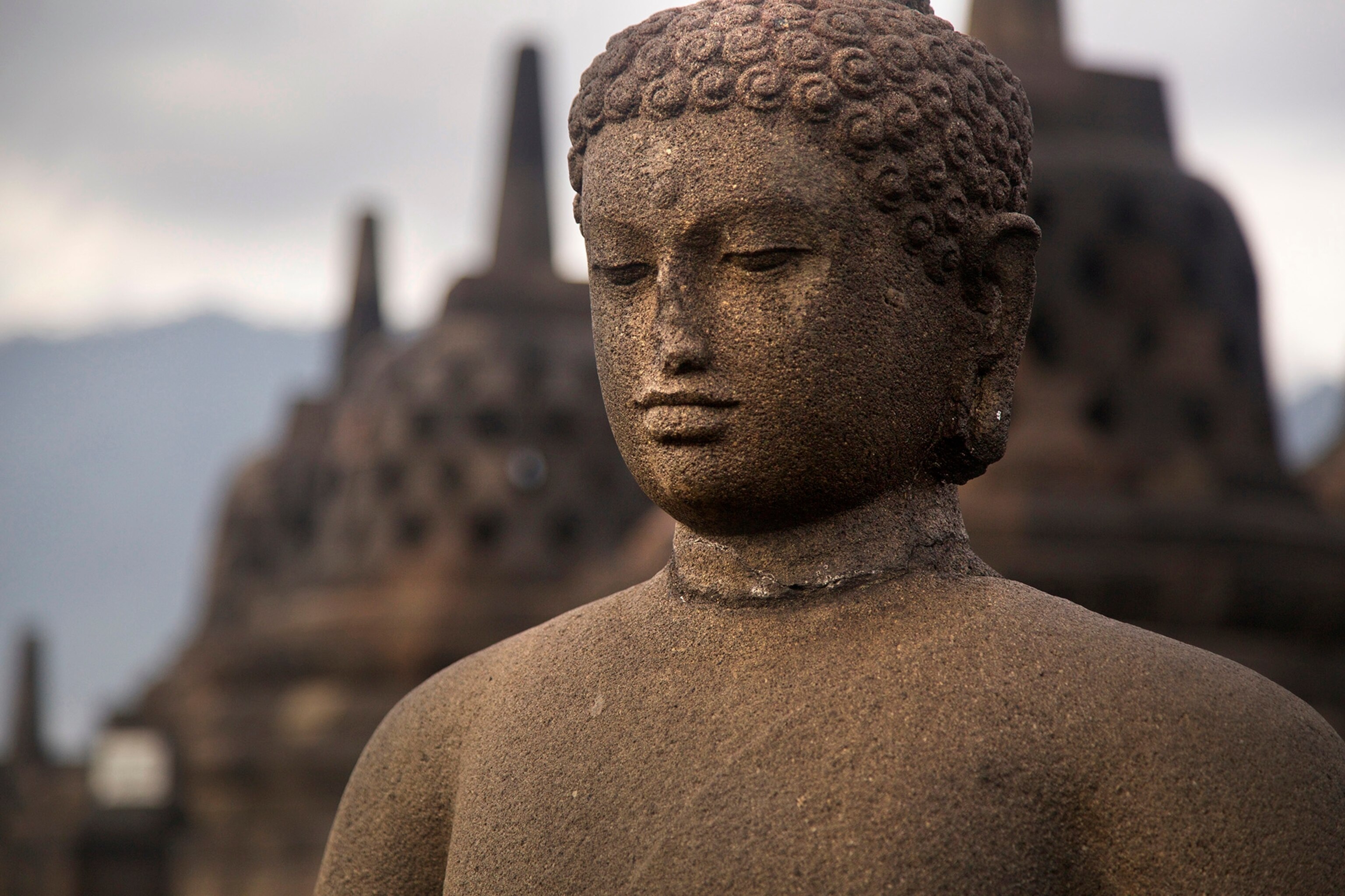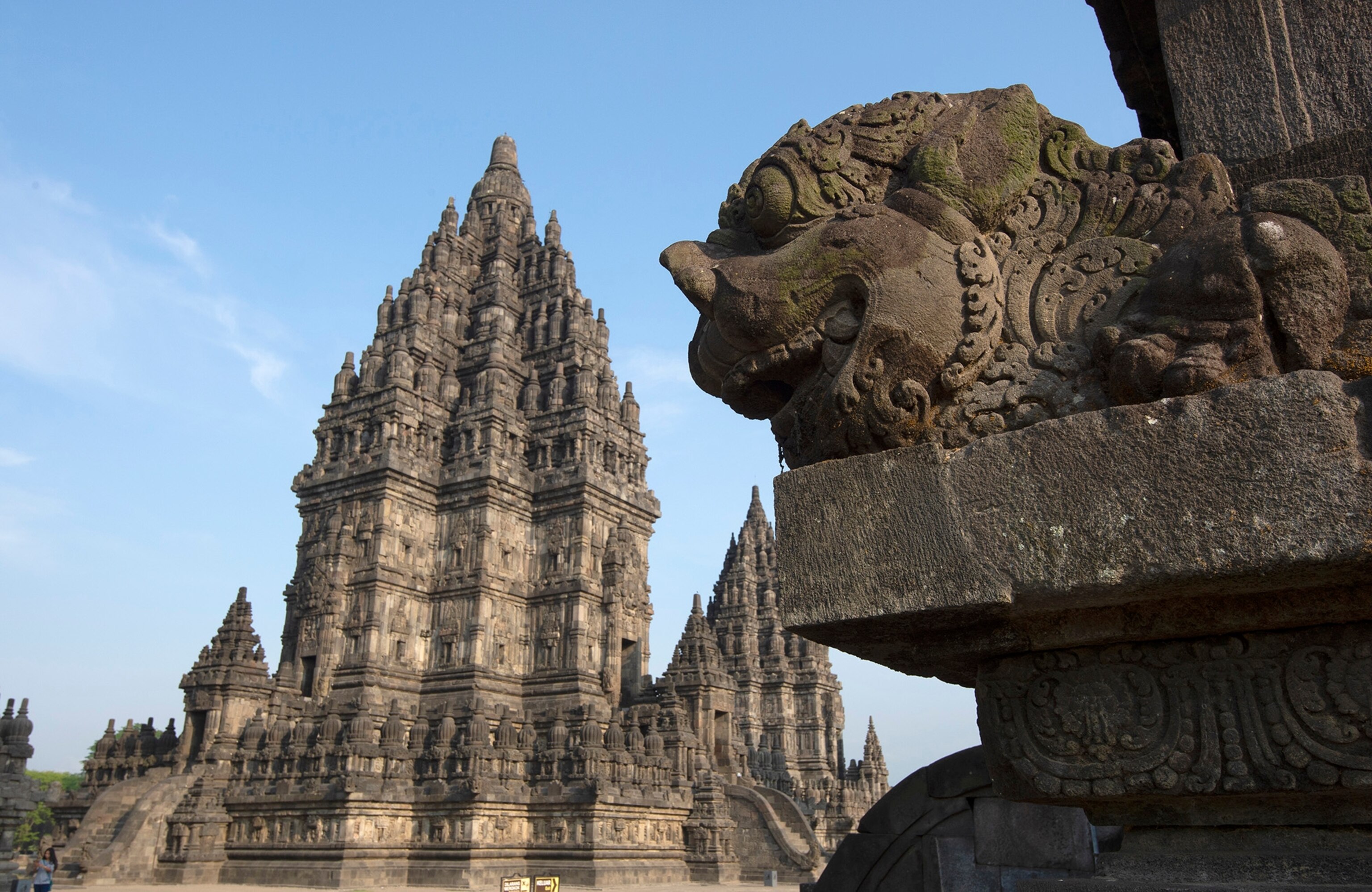The early morning light filters through a hole in the roof of the Grubug Cave to form an array of tiny natural spotlights bouncing off the damp, rocky floor. I feel like the star of my own adventure reality show as I stand under the light and point my camera towards the Instagram-worthy spectacle above.
Earlier in the morning, I was gently lowered over the side of the Goa Jomblang cave system, around 40 kilometres from Yogyakarta, on a rope. Above, a team of locals eased me around 50 metres to the cave complex floor as I swayed back and forth gazing at the cliff walls and inhaling the heady scents of moist volcanic rock and the fecund rainforest above.
The caves are in Gunung Kidul, and the swaying rope entry is an appropriately magical doorway to a hidden forest lying at the bottom of the cave’s sinkhole.

At the bottom, I half expected the hidden forest to reveal numerous mythical creatures straight from a Tolkien story instead there is only the serene echoic sounds of nature.
It’s here I entered a system of caves leading to the Grubug Cave and my moment in the filtered light. It’s quite muddy underfoot but I had been supplied with boots thus ensuring my own shoes stayed relatively pristine for another day.
Equally as impressive as my entry was my exit as around 15 local villagers hauled me upwards to the surface again and a very late breakfast of slow-cooked Gudeg (a sweet, spicy jackfruit stew) and rice.
Sustainable ancient ways
The previous evening, I had arrived at Yogyakarta’s Adisutjipto International Airport and quickly realised I had not arrived in just another quaint Indonesian village.
The special region of Yogyakarta includes 64 districts with over 3.7 million people, while the actual population of Yogyakarta as a standalone city is just over 600,000. It’s renowned as the city of Gudeg and also the cradle of civilisation on Java - one of the most populated islands of Indonesia.
The city was the seat of power of the Mataram kingdom in the 16th and 17th centuries and it lies close to Magelang, home to the magnificent temples of Borobudur and the nearby Prambanan temple complex built in the 8th and 9th centuries.
Yet the beauty of the city is not just defined by its links to the past but also its people, the thriving markets and its natural splendour.
Take a short stroll in the city and turn the corner and you’ll often find an open field leading to a small village. Surrounding the village might be rice paddies with locals still farming them in the traditional and sustainable ancient ways.
Getting away from the city though is where the adventure and some of the true cultural wonders lie. An early morning visit to the Buddhist temple of Borobudur is an absolute must. Watching the beautiful soft light that seems to lift from the jungle at sunrise is a deeply spiritual experience not dampened by the fact you might be accompanied by many other early morning visitors.
Once the other visitors filter away, you get a real sense of the Borobudur’s scale. It’s an incredibly ancient building and the detail of the carved reliefs covering every inch of the building is astonishing.


Delicately fashioned holy places
Built about 800AD, the World Heritage Site is a vast structure consisting of two million blocks of lava rock, and featuring 2,672 relief panels and 504 Buddha statues. The key here is to take your time while you wander around the different levels of the building.
Close by is the less-visited but equally historic Mendut Temple. Local stories suggest it was once linked to Borobudur by a brick-paved road forming a vast sanctuary, a complex that included other nearby temples as well.
Again, the outside walls of the temple are intricately carved and there’s a discernible air of contemplative peace associated with the shrine and its surrounds. In fact, the Monastery next to the temple offers retreats and daily group meditation.
For many visitors, a day in the area might finish at Prambanan which lies 50 kilometres away from Borobudur. Another UNESCO World Heritage Site, it is the largest Hindu temple in Indonesia and its proximity to Borobudur suggests that on Java, Buddhism and Hinduism have always lived peacefully next to one another. The tallest temple in the complex rises to over 47 metres towering over the other ruins as well as the surrounding region. The whole complex ranges over nearly 40 hectares and includes larger temples as well as hundreds of smaller intricately carved holy places.
Put simply, the best way to explore the complex is on foot so you can really soak in the lush surrounds and immerse yourself in the location’s tranquillity. If you do find yourself there at sunset, it’s a sight just as beautiful as the morning sunrise at Borobudur, as the evening sky slowly seems to soak up the day.
Prambanan also provides visitors with an opportunity to buy an evening meal at numerous local market stalls where you can sample traditional Javanese cuisine or visit a local market to buy souvenirs or a fine example of local batik fabric.
Beyond the region’s spiritual beauty and if you have some time, there are plenty of other adventure activities and gorgeous beaches to visit in the region. Moreover, there’s a thriving local art scene and the opportunity for people to really immerse themselves in Indonesian culture whether it be local cooking, learning to dance or even playing the gamelan.
It’s the reason why Yogyakarta is the soul of Java. A place where you need some time to thoroughly enjoy and appreciate its natural and human-created wonders.



